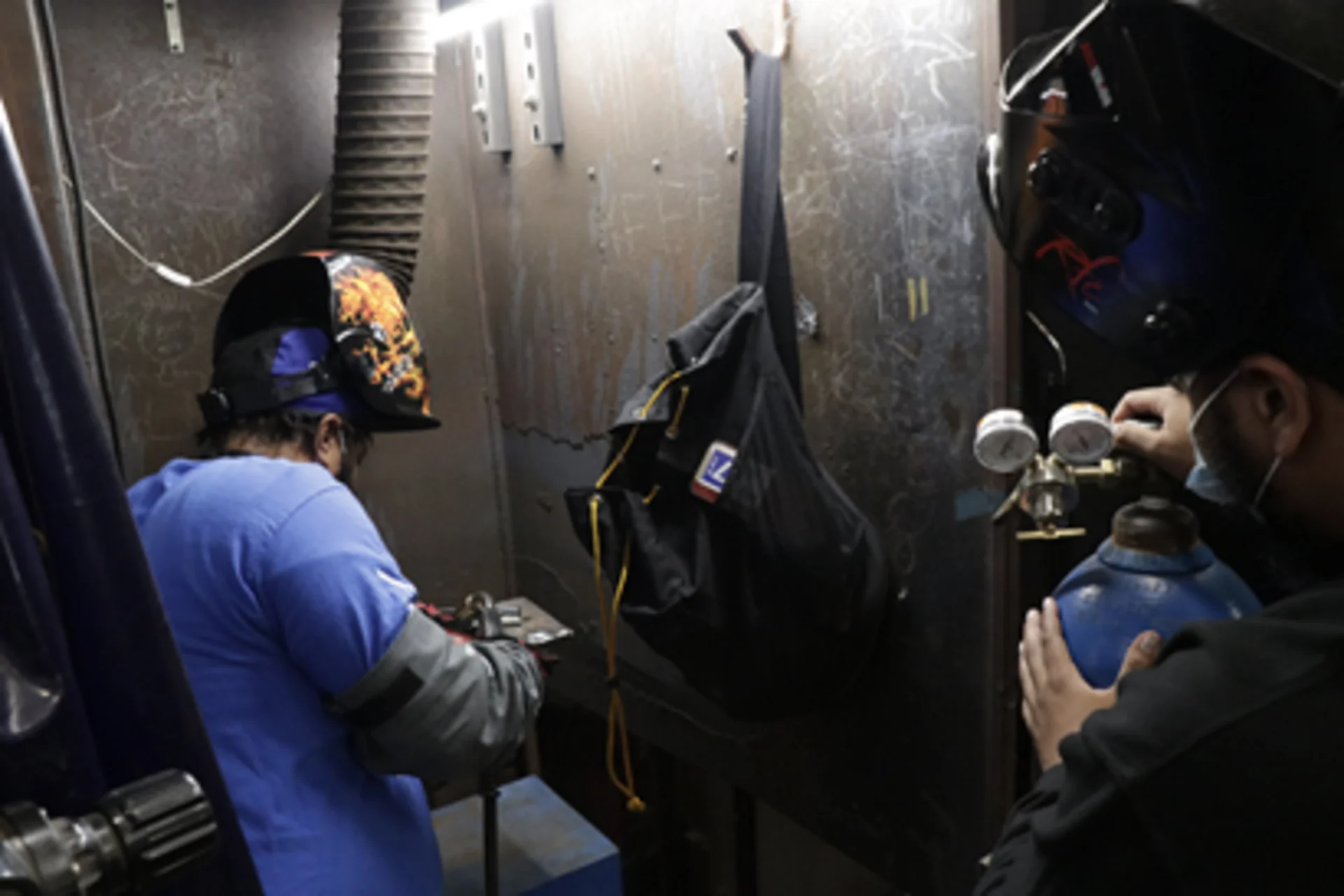MIG welding, also known as Metal Inert Gas (MIG) arc welding, or Gas Metal Arc Welding (GMAW), is a widely used and versatile welding process renowned for its speed, precision, and ease of automation. MIG welding isn’t like other different types of welding, such as stick or TIG welding, since it uses a continuously fed wire electrode for forming an arc rather than solid-coated electrodes. It ensures a smoother and more stable joining that decreases the frequency of electrode replacements. However, it doesn’t work uniformly in all cases. To truly master this technique, welders must learn different metal transfer processes. To truly master MIG welding, aspiring welders must undergo a professional welding training program and learn the five main metal transfer processes that define this method.
Understanding the five core processes during MIG welding training helps select the right method for any project.
As the name indicates, short-circuit transfer entails a quick, regulated shorting of the electrode wire to the workpiece. With little heat input, the molten metal separates into tiny droplets to form a sputtering arc. This method works well for welding thin sheet metal (less than 3 mm) because it involves a professional welding training program that teaches the five main metal transfer processes that define this method.
The tiny droplets enable minimal deformation of the base metal and accurate bead placement, making it perfect for delicate uses like automobile bodywork.
The short-circuiting process reduces the molten metal droplets that might leave flaws on the weld surface, which means less cleanup and redoing.
Aluminum, stainless steel, mild steel, and other materials are among the many materials with which short-circuit transfer is effective.Students in welding classes often learn to balance control and speed with this technique to achieve clean welds on heavy materials.

However, there are some limitations to this welding process. Because short-circuit transfer is inherently stop-and-start, the welding pace is slower than other procedures. Furthermore, it might not be as appropriate for thicker materials that need deeper penetration because of the low heat input.A solid welding training program helps welders understand current control and material compatibility for this advanced process.
Compared to short-circuiting transfer, globular transfer uses a bigger molten metal droplet at the electrode tip. This droplet briefly contacts the workpiece, resulting in a deeper penetration spherical arc. This procedure is ideal for:
The deeper penetration makes effective welding of thicker materials (about 3 to 6 mm) possible. Therefore, it is a better option for applications involving structural steel.
Because globular transfer involves a higher amount of molten metal, it enables slightly faster travel speeds than short-circuiting transfer. Ideal for long, uninterrupted welds used in MIG welding jobs in pipeline or shipbuilding industries.
A constant stream of tiny metal droplets detached from the electrode wire and moving into the weld pool defines spray transfer. This produces a powerful, high-energy arc that is perfect for:
Among the MIG welding process, spray transfer has the fastest travel speed, which makes it very effective for lengthy, continuous welds. This is a significant benefit in fields like pipeline construction and shipbuilding.Mastering these arc welding techniques through a certified welding training program prepares you for diverse opportunities across industries such as automotive, construction, and manufacturing.
As the name implies, pulsed spray transfer combines short-circuiting transfer with spray transfer advantages. The welding current is pulsed, resulting in a brief short circuit and a spray transfer phase. This method provides:
Compared to traditional spray transfer, the short-circuit phase minimizes spatter and improves puddle management by enabling greater control over molten metal transfer.
Compared to conventional spray transfer, pulsed spray transfer may successfully weld a significantly thicker range of material.
Because of this, pulsed spray transfer is a flexible method that can produce excellent welds with minimal spatter. However, a more powerful welding device that can pulse the current is needed.Whether you aim to work in shipbuilding, construction, or manufacturing, mastering arc welding techniques at a reputed welding trade school in Philadelphia will open the door to high-paying MIG welding jobs and TIG welding job opportunities worldwide.
Due to its similarities to MIG welding, FCAW (flux-cored arc welding) is a process worth mentioning. During welding, FCAW employs a hollow, flux-cored electrode wire that releases other components, such as deoxidizers, alloying agents, and shielding gas. This makes it more portable and appropriate for outdoor applications, eliminating the requirement for a separate shielding gas source. FCAW provides a few benefits.
Like short-circuit transfer, FCAW is effective with a wide range of materials, including low-alloy, stainless, and mild steel.

FCAW is a suitable option in windy situations where maintaining a steady gas envelope can be challenging, as it does not require an external gas supply.
Because flux-cored arc welding generates extra heat from the flux core, it can achieve travel speeds comparable to those of globular transfer.
However, FCAW comes with its own set of considerations:
After exploring the five core processes, the question arises: how do you choose the right one for your project?
Here are some key factors to consider:
Mastering these five processes in MIG welding training equips an individual with the versatility and control to tackle a wide range of welding projects. Knowledge of these different processes, good safety practices, and proper equipment selection will pave the way for a successful and rewarding career in MIG welding.
Read More